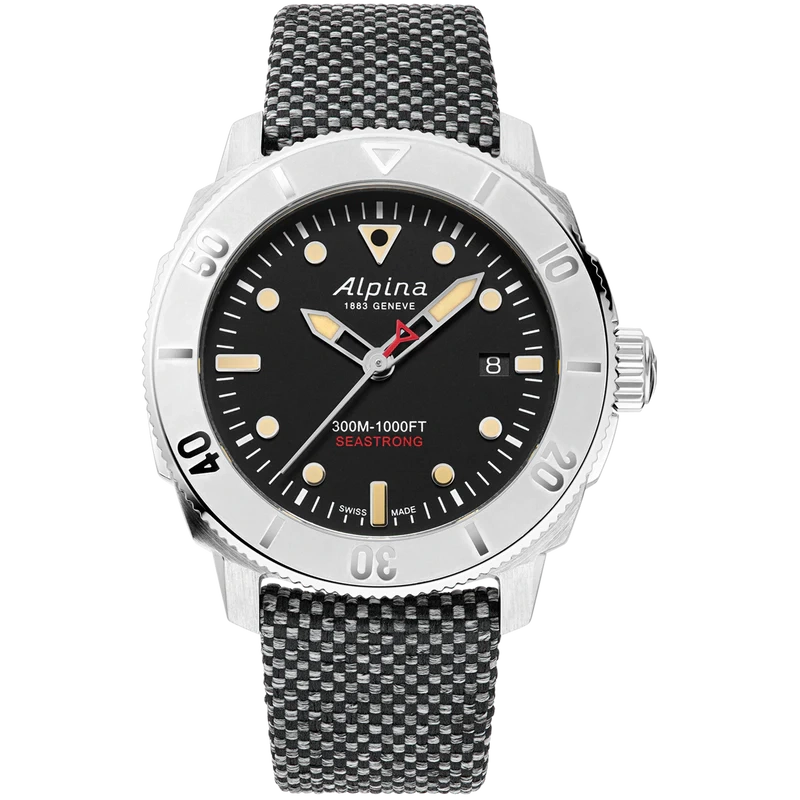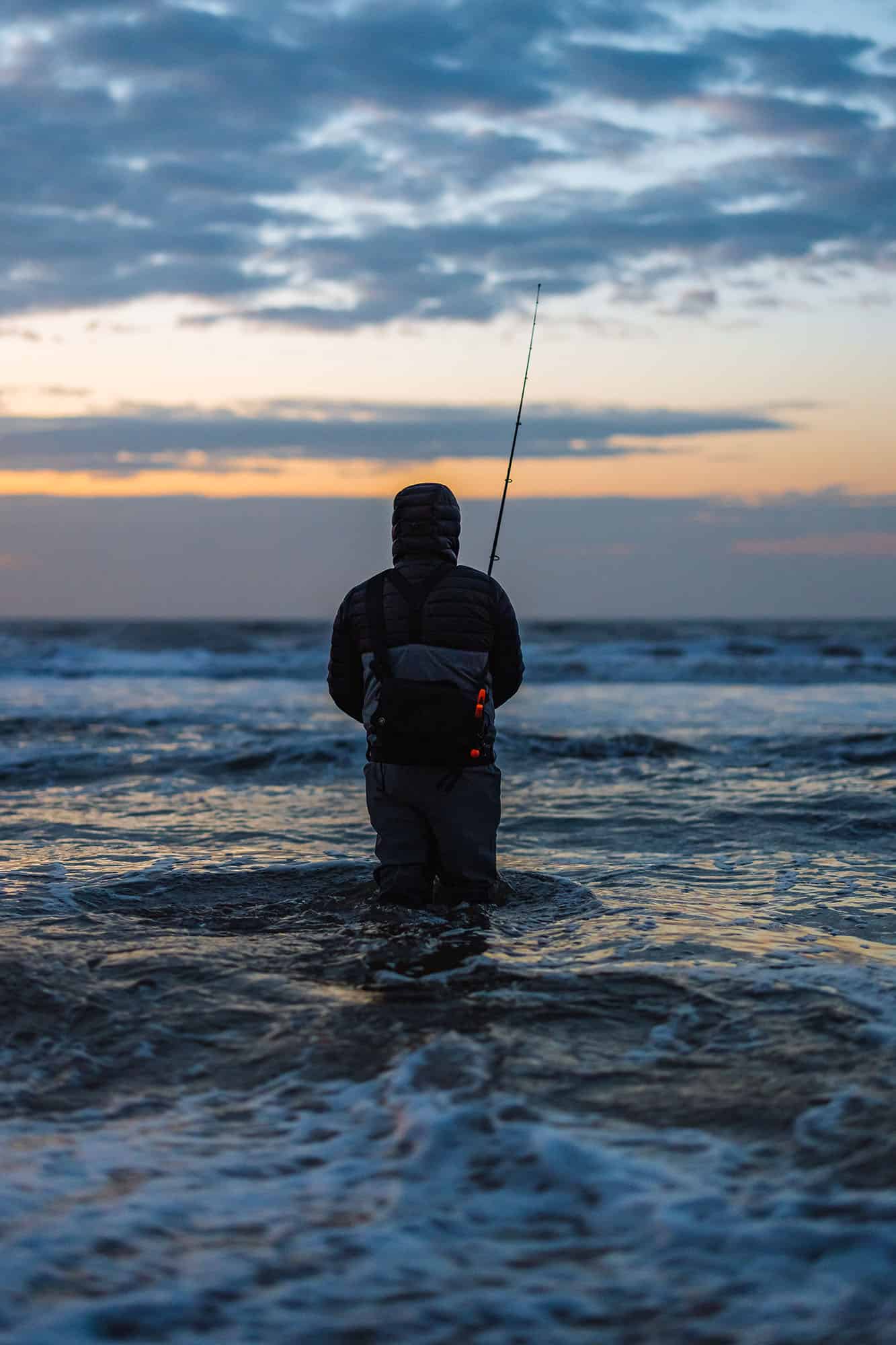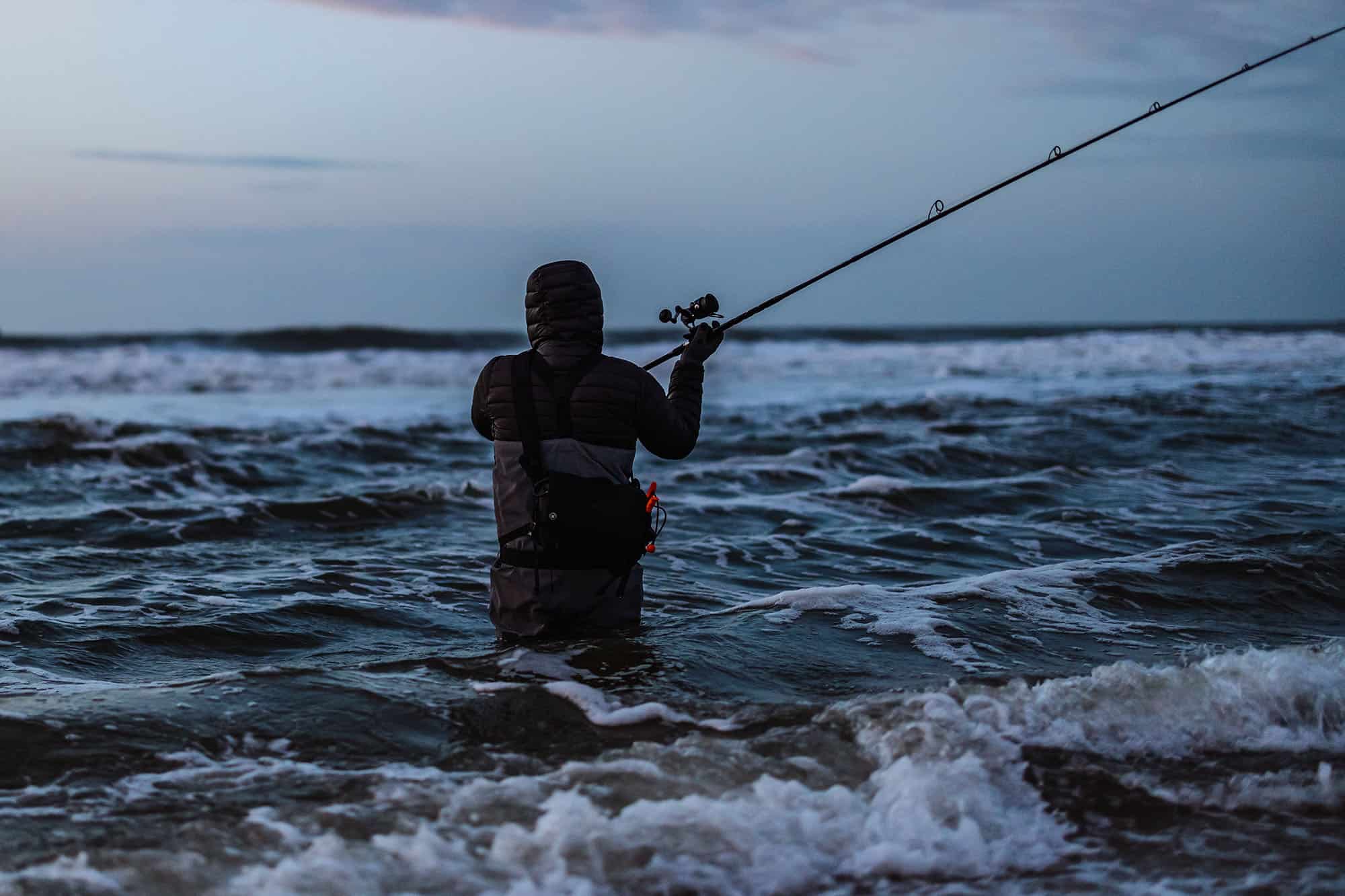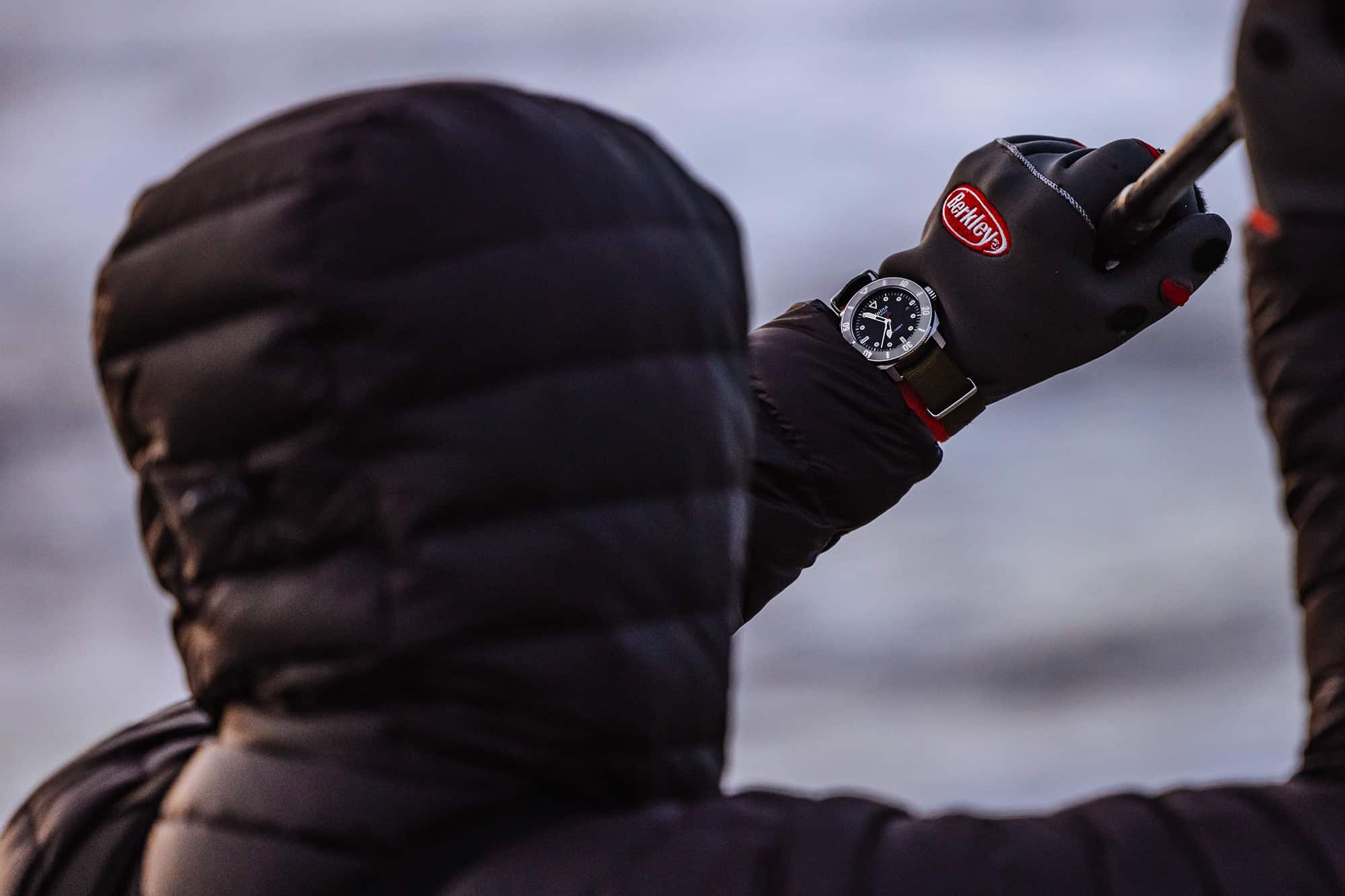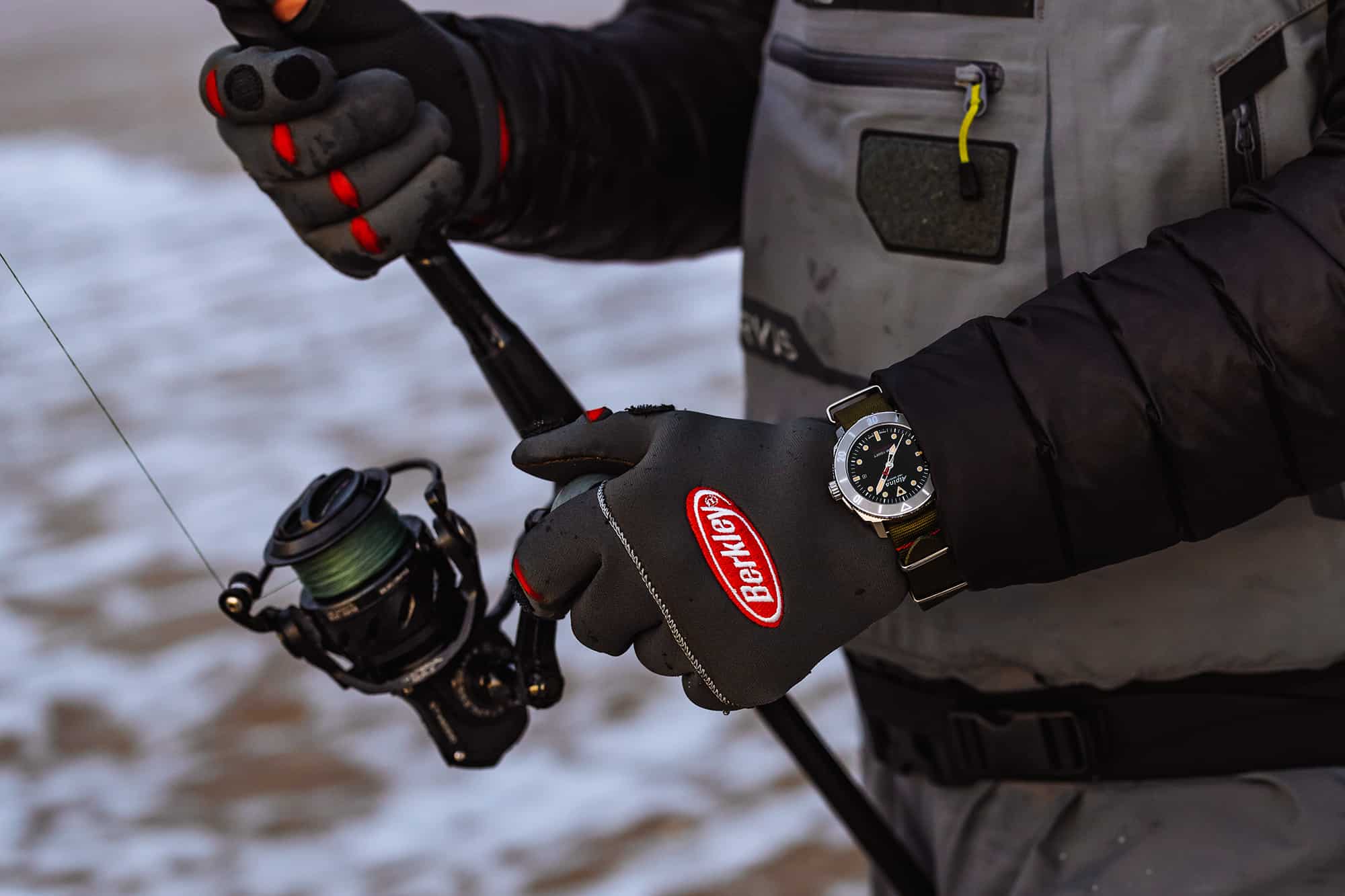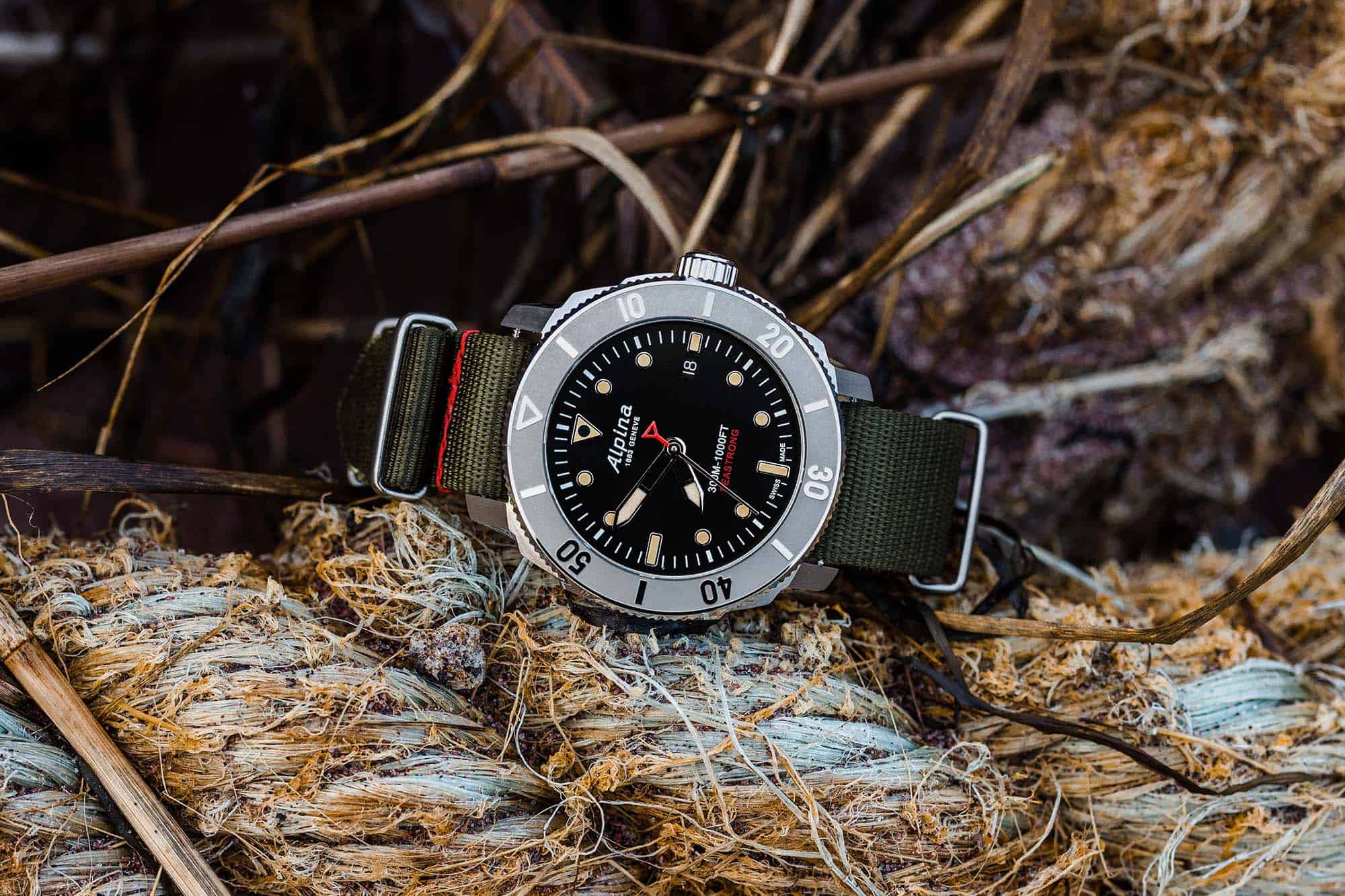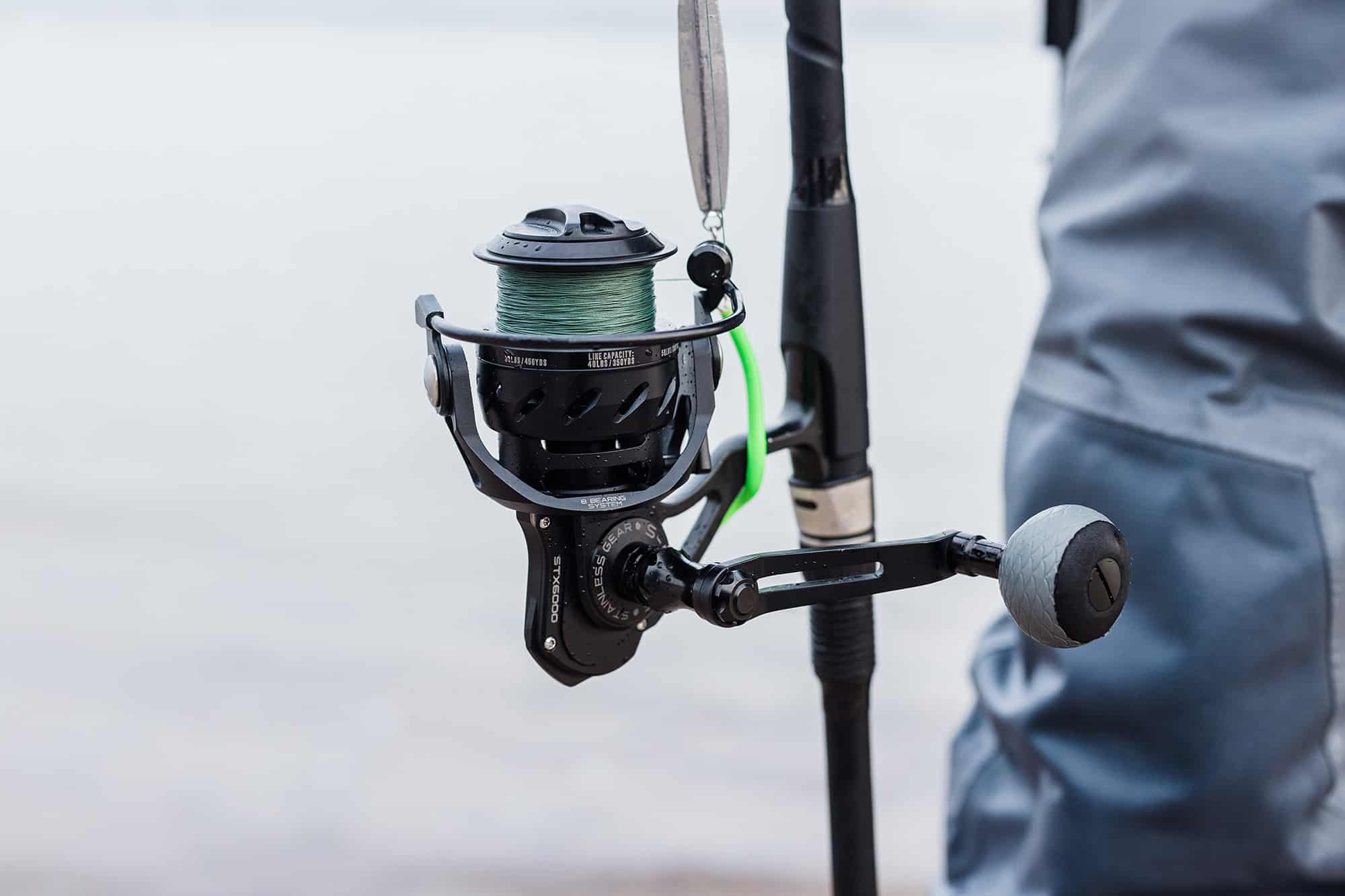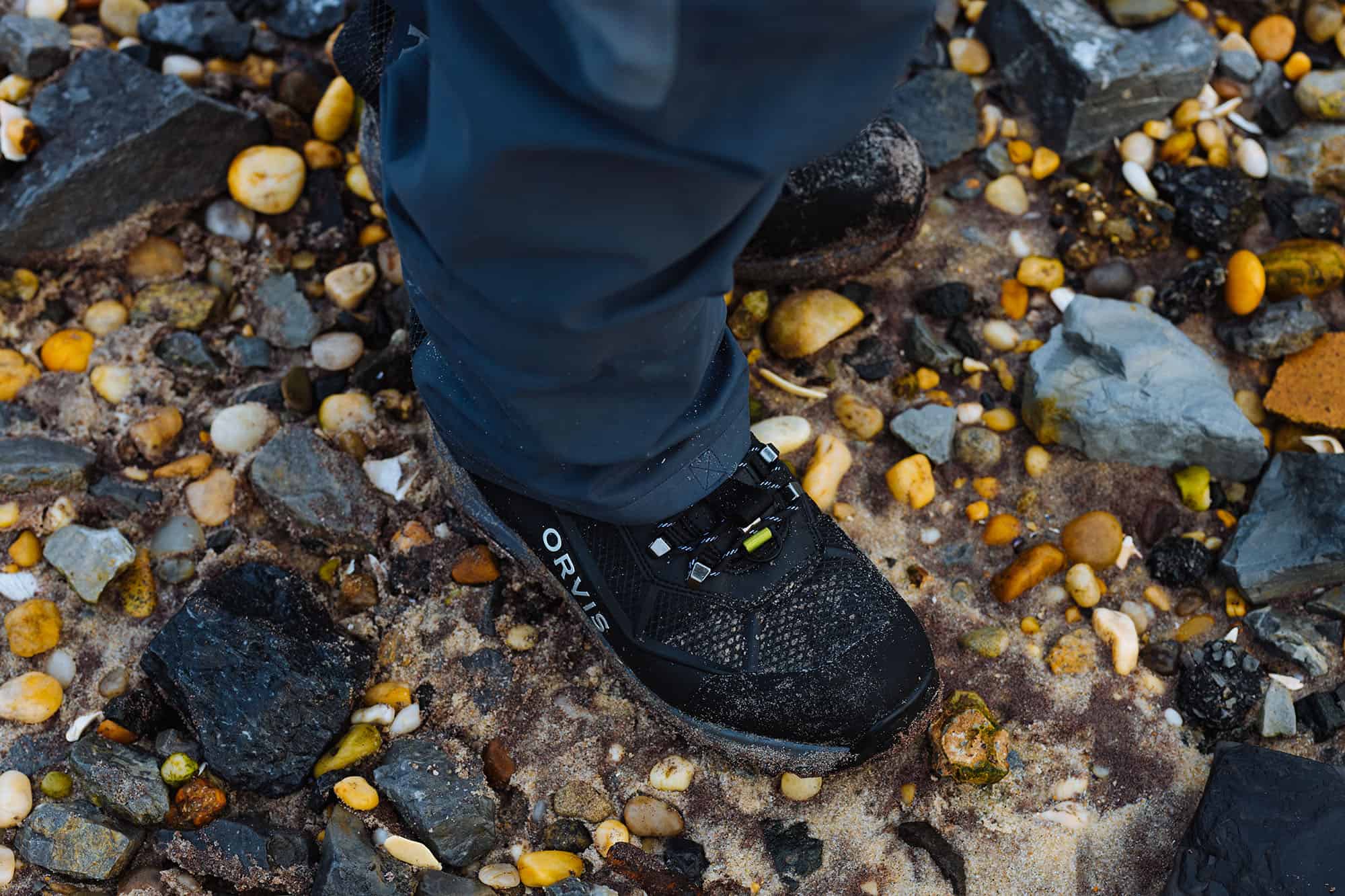
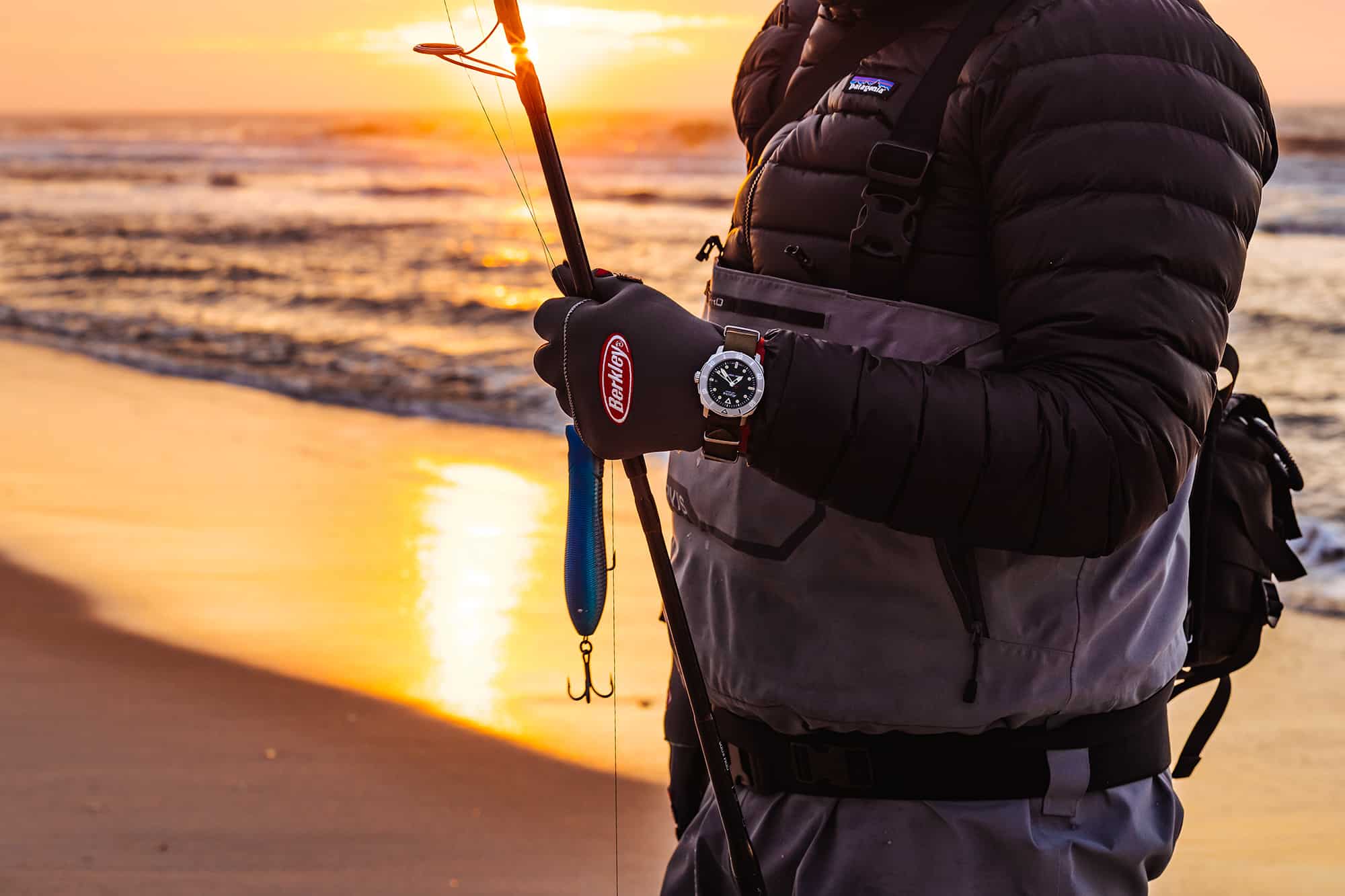
Surfcasting is one of those things that took over a lot of my free time, and fast. My most frequent form of fishing is typically with a fly rod, standing in a relatively calm river somewhere gently presenting flies to willing trout. Surfcasting is the opposite. You’re standing in the ocean, waves crashing around you, often in the hours after sunset or before dawn. It feels a little crazy packing up and heading down to the beach at some absurd hour that you’d usually be sound asleep, but if the tides look good, you text your fishing buddy, pound a cup of coffee, and fight off the tired for a few hours hoping you’ll end up with a fish on the end of your line.
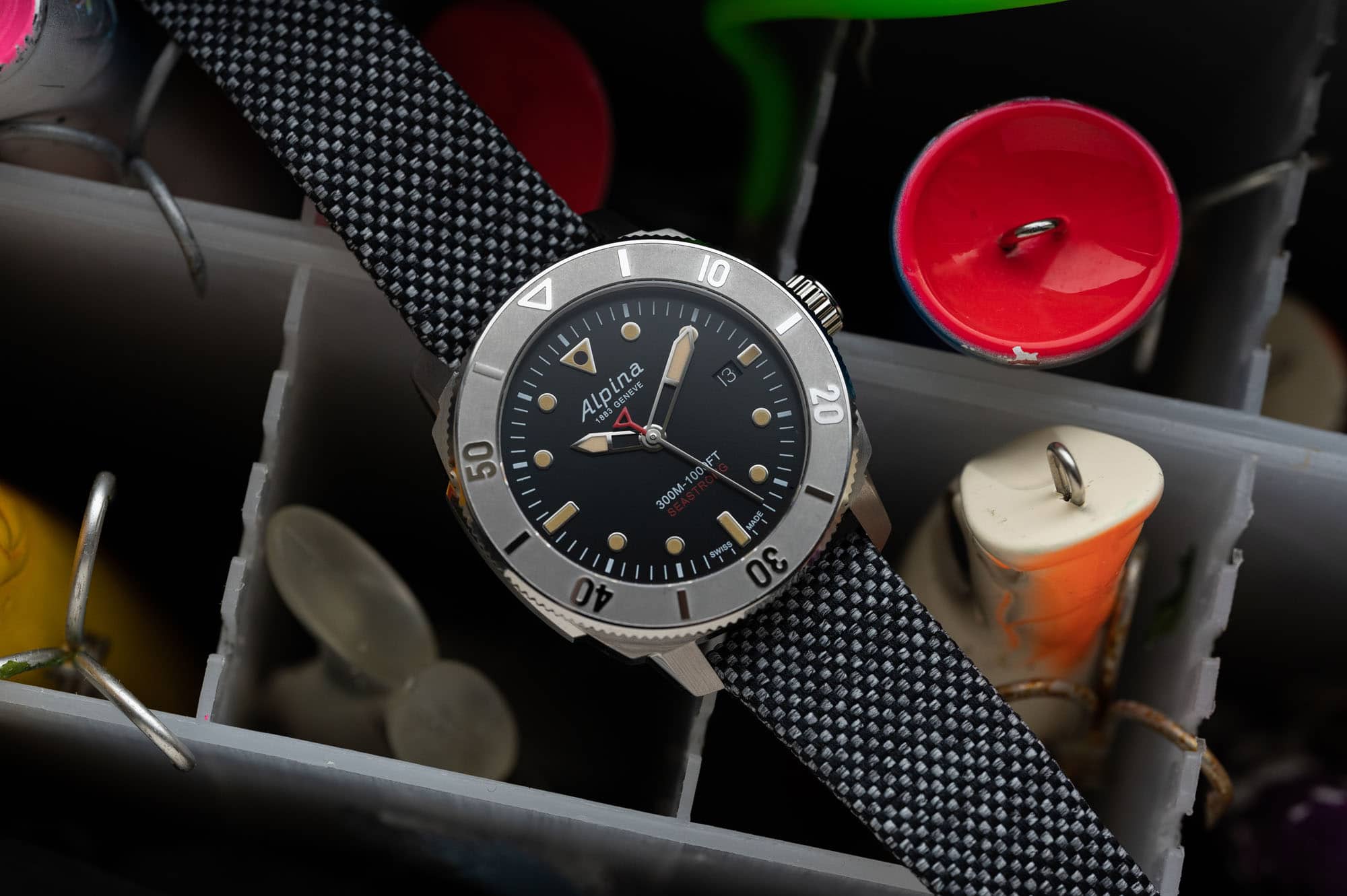
Long Island is prime territory for the North East’s favorite trophy fish—the Striped Bass, colloquially known as the “Striper.” They’re large fish that’ll hit a lure like a truck, and if you’re so inclined, make a heck of a dinner too. This migratory fish spawns in freshwater, then takes to the ocean for the majority of their lives. Each year, they move from Cape Cod all the way down as far as North Carolina, seeking warmer waters. They fatten up by devouring pods of baitfish that act as fuel for their long journey. Long Island is situated near the mouth of the Hudson River (a prime spawning ground) that draws fish around the island on both the North and South shores. Even though the geography is right, actually finding fish is the tough part. You can read up on all the tactics you want, but it’s different once you’re out there. There are preferred tides, best practices for reading structure on the beach, ideal phases of the moon, different lures to use at different times of the day… the list goes on. In my first year of surfcasting, the main thing is putting in the time, listening to advice from your tackle shop, and keeping notes.
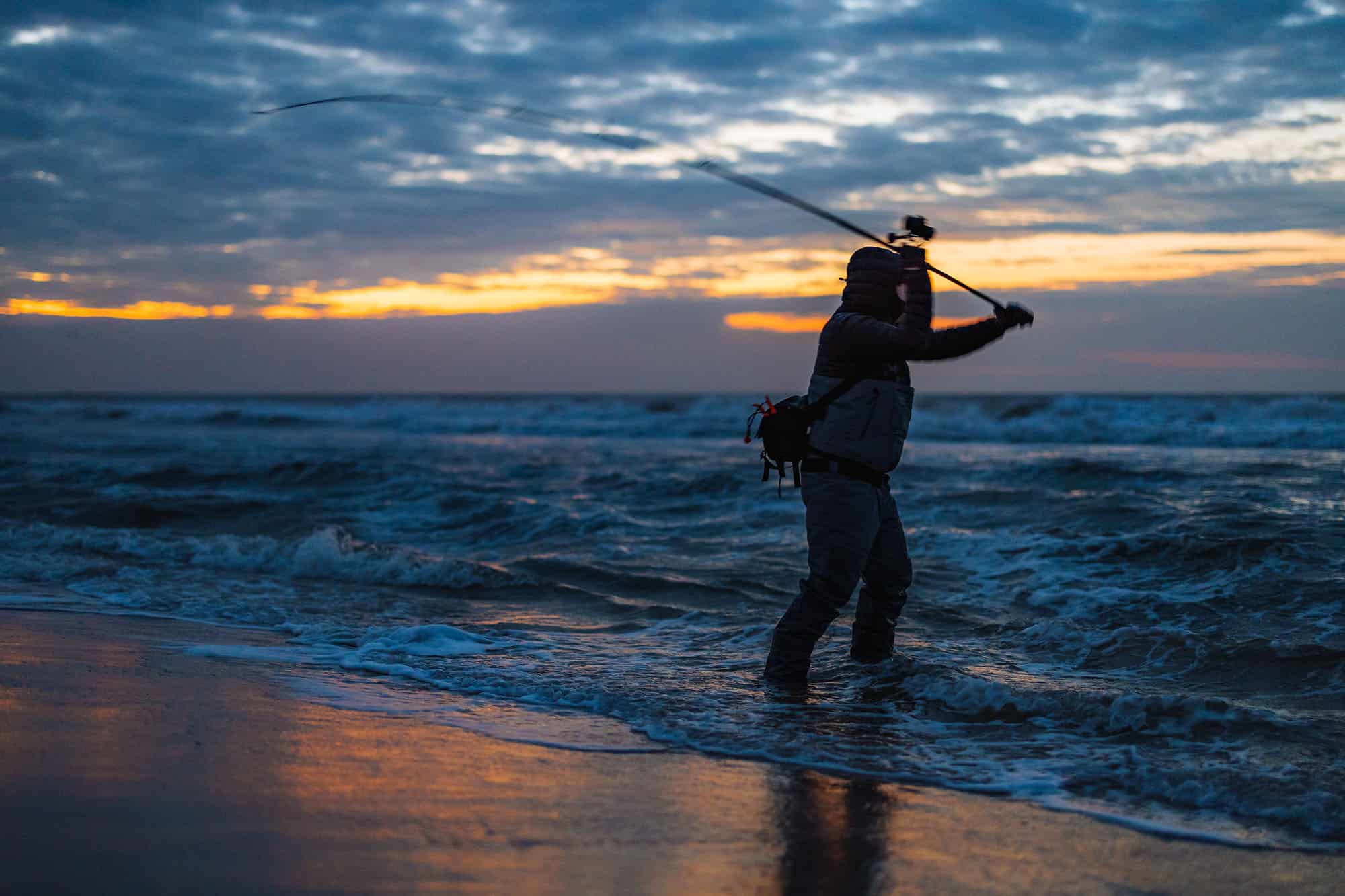
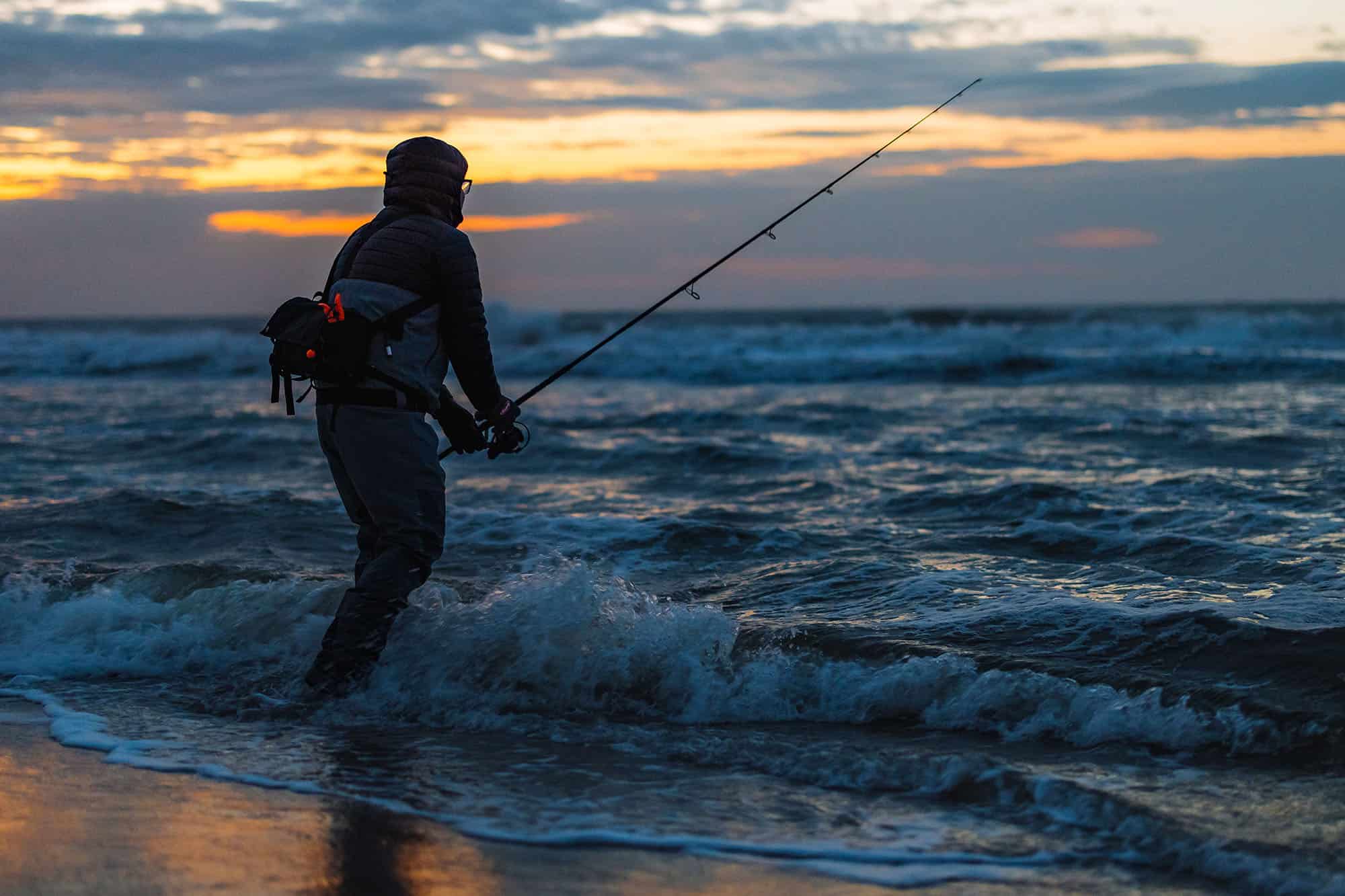
Surfcasting is done from the beach. Often, there’s a bit of a hike involved to get to the spot you want to hit. Sometimes that’s a stretch only accessible by foot, or climbing down some sketchy rocks in the dark so you can fish under the Robert Moses Bridge pylons. There’s a fair amount of gear involved. You’ll find yourself in waders and boots, a headlamp on if it’s dark, a loaded lure bag on your back, and a ~10ft rod and sealed reel that keeps the salt water out. I also always wear a watch, and what better for spending time in the ocean than a diver. My ideal watch has ample water resistance, a healthy hit of lume to check the time far into the night, and it needs to be durable. Whipping a lure out 50+ yards beyond the first break of waves on a sandbar takes some muscle, and you want a watch that can stand up to the repetitive motion and harsh environment.
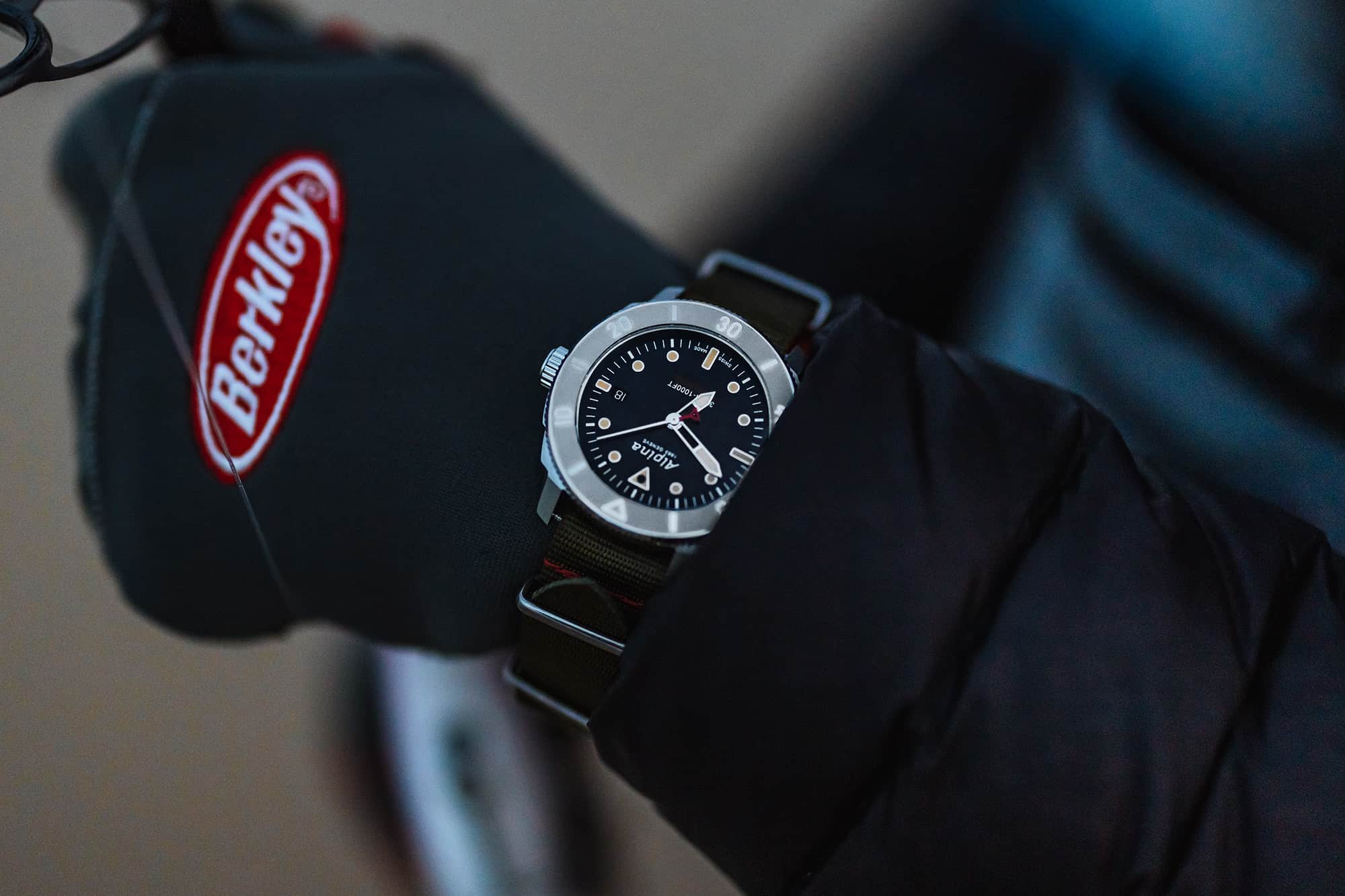
For this trip that we documented, the watch on my wrist was the Alpina Seastrong Diver 300 Automatic Calanda. Its angular case is crafted from a unique 100% recycled steel that is sourced primarily from the maritime shipping industry. It’s interesting how the watch starts off serving one purpose in the ocean, and ends up back where it started, this time it’s on your wrist. The dial features a glossy black finish with applied indices, each filled with old radium lume that glows nice and bright while the sun is still below the horizon. The seconds hand is accented with a bright red triangle that picks up on the “SEASTRONG” text on the dial. Surrounding the dial is a unidirectional rotating bezel with a brushed finish. The textured edge is easy to grab and turn, even with a thick pair of neoprene gloves on.
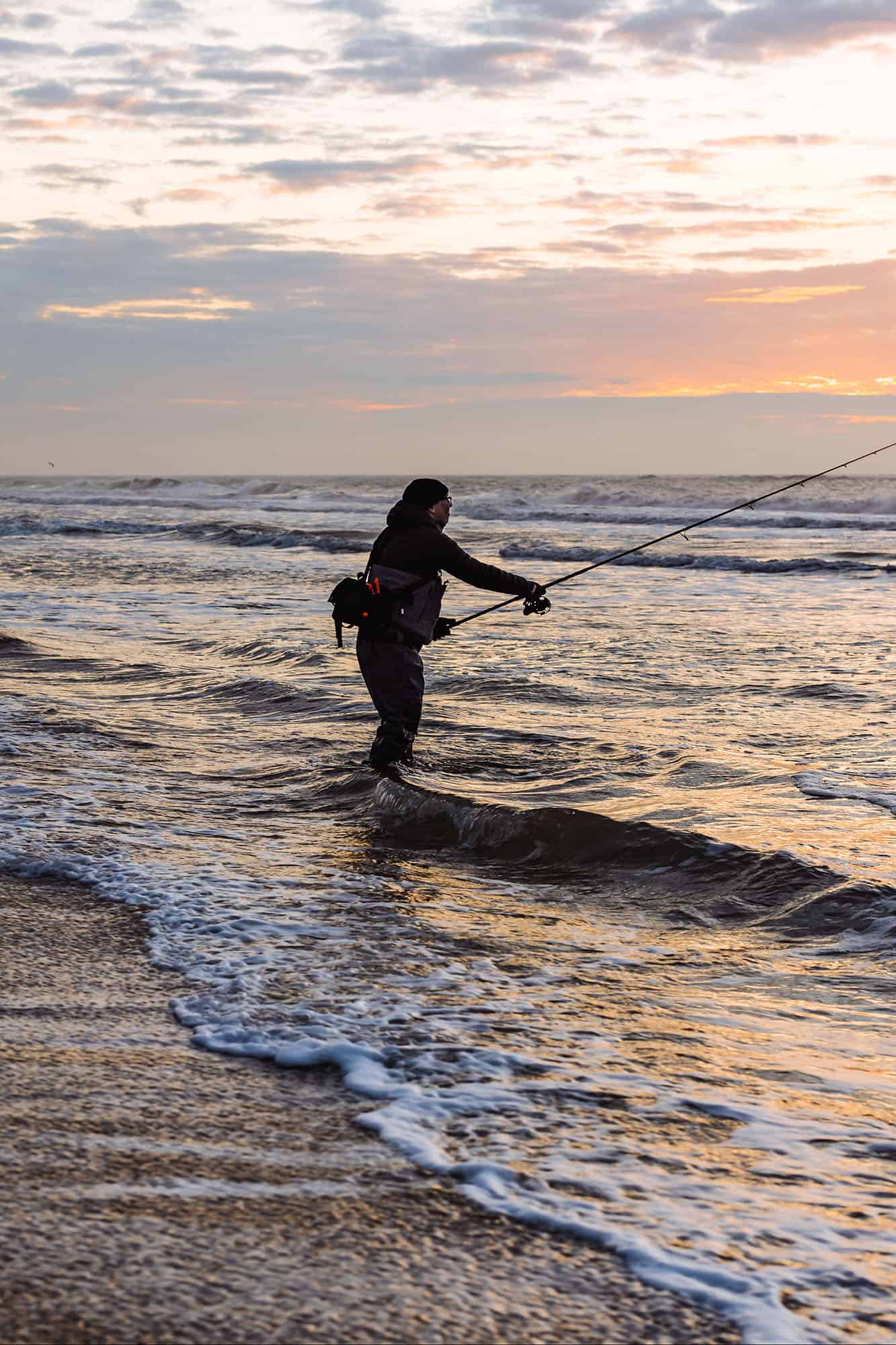
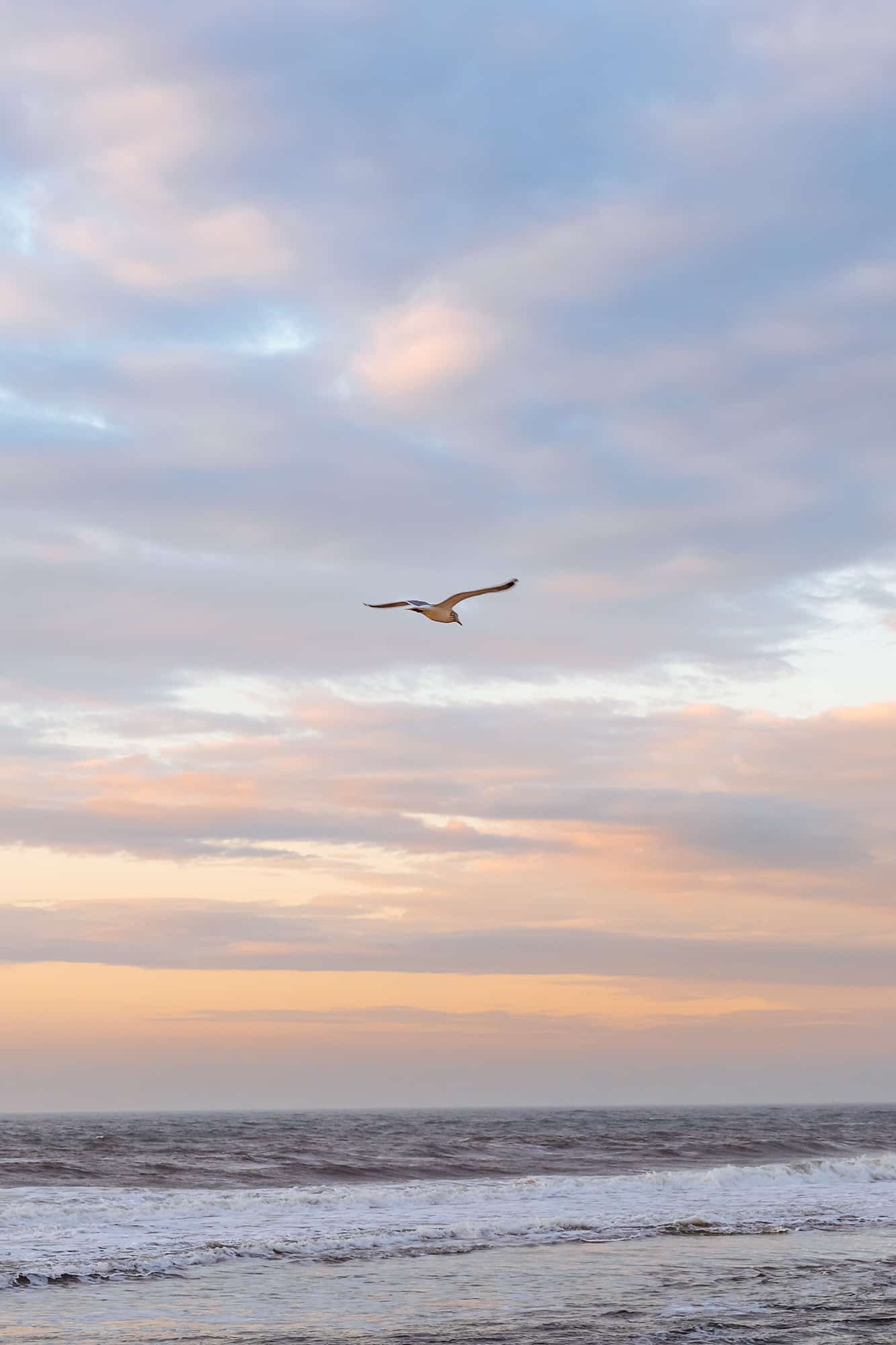
Wearing the Seastrong while going about my normal day was easy and comfortable when using the stock strap. It’s a black and grey check pattern, crafted from recycled PET plastic—another great example of using recycled materials. For the fishing trip, I opted to swap out the stock strap for a Forest ADPT strap. The green of the nylon paired well with the neutral tones of the watch, while the red contrast stitching picked up on the dial accents really well. The extra length of the ADPT was ideal for wearing the watch over my gloves, so telling the time never involved rolling up sleeves on a cold day.
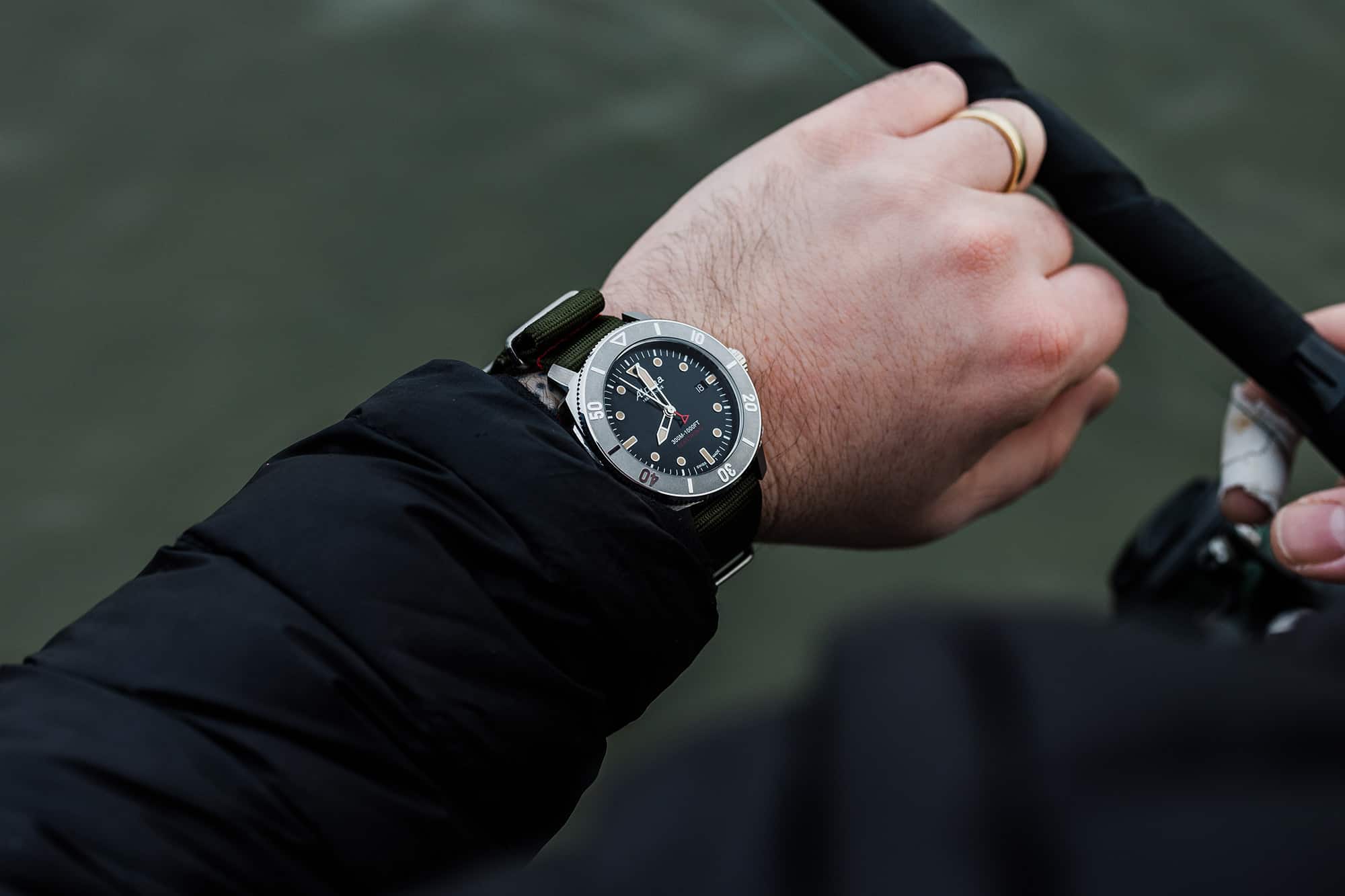
Wearing a watch in the surf is ideal for two reasons. The first being that you’re well aware of how long you’re staying out, which can be directly correlated to how tired you’ll be at work during the upcoming day. It’s also beneficial for estimating roughly how much coffee you’ll need. On a more practical level, it helps to know exactly what the tide is doing. Breaking out your phone and messing with tide charts is both risky and annoying when you’re standing in the thigh-deep water at night. It’s generally accepted that the two hours leading up to and two hours following high tide are prime for striped bass fishing. Glancing down at your wrist is a much safer bet than fumbling with your phone. I also used the Seastrong’s unidirectional bezel to mark the tide. By moving the arrow at the 12 o’clock to coincide with high tide, you can have a better idea of what the water is doing. It’s very convenient for making note of what’s working and what’s not—which you can use to better plan your next trip.
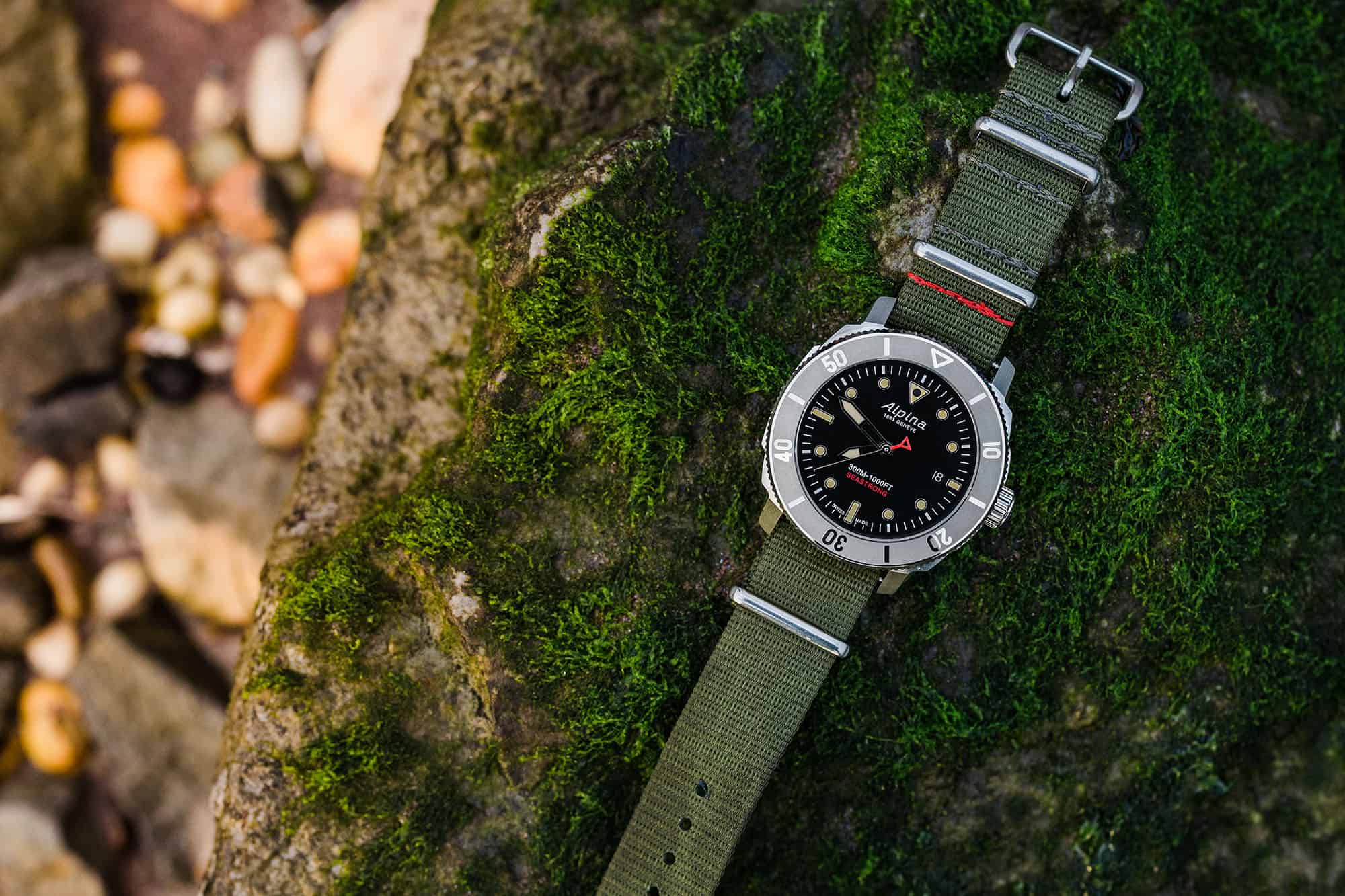
In addition to the watch, there’s some other crucial gear that you can’t really fish the surf without. Your rod and reel are very important. I fish an ODM DNA 10 foot surf rod. I like it because of the slim grip that really lets you feel the action of the lure in the water. It’s rated to throw lures that weigh between 3/4-4oz., which covers a wide spectrum of lures you would be using. I have it paired with a Tsunami Salt x 6000 reel in black anodized aluminum. The reel is fully sealed, meaning it won’t let salt water inside to mess up the gearing. When waves are breaking around your waist, it’s nice to not have to worry about keeping your reel above the surface. It’s loaded with braided line that’s strong and lightweight. Braid doesn’t have a “memory” either, meaning it won’t hold the tight concentric circles that older monofilament lines would when stored on a reel for long periods of time. I went a little overboard on waders this year, being that I’ll get plenty of mileage out of them in both fresh and saltwater. I went with Orvis Pro Waders and the matching Pro Wading Boots. Staying dry is of the utmost importance when you’re spending hours in the cold Fall water and the extra organization pockets/pouches and durability that the Pro level waders provide was enough to justify the price tag.
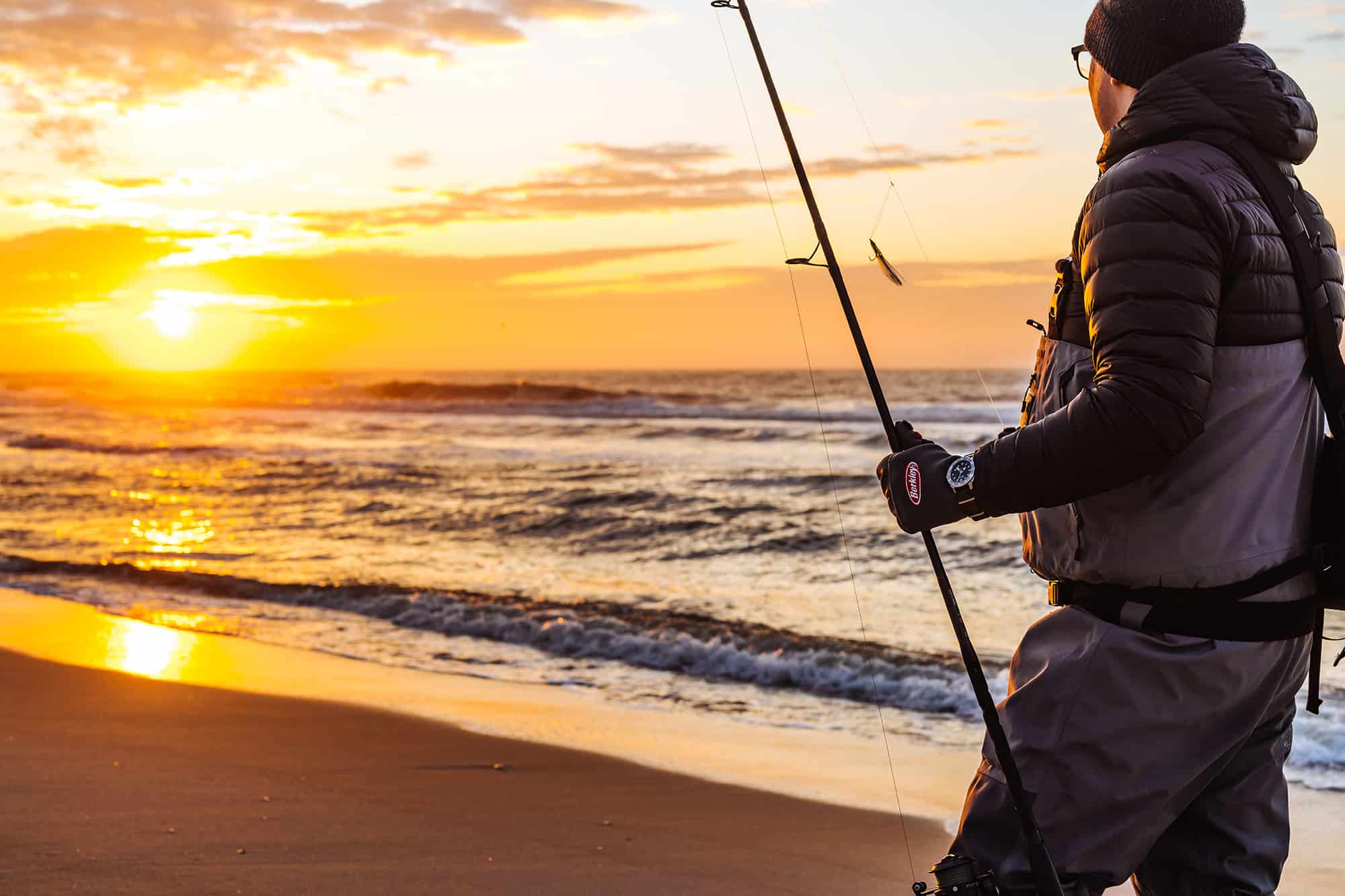
This particular trip for this story was just outside of striper season. We hit the beach in early January, and while it was unlikely to yield any fish (spoiler: it did not), it felt great to get back out there. I was still hoping for that rare January holdover fish that decided to weather the winter up north, but even the birds seemed to take the dead of winter off. It had been just about two long, cold months since getting out there and it felt great to be on the beach before the sun came up. The weather was particularly nice that day, with a high of 52 degrees, almost unheard of for mid-January on Long Island. In the distance, dredging boats were up on their stilts pumping sand back onto the shoreline of our barrier beach, preparing for the season ahead. In a way, that’s kind of what I was doing as well. Making the best of an unseasonably warm day just to make sure I still have my casting technique down in preparation for the triumphant return of the striper. While there weren’t any birds working pods of bait from above while stripers feast from below (known as a blitz), I still appreciated the sound of the ocean, the salt spray in my face, and the gleam of the rising sun.
One of the guarantees about fishing is that there are no guarantees. You can put the time in, the tide can be just right, your bag is full of just the right lures, but sometimes the fish aren’t there. For me, it’s not just about getting a fish on the end of my line (okay, it definitely helps a lot though), but it’s about the pursuit. It’s about getting out there to the calm and quiet beach, joining the ranks of other similarly sleep-deprived surfcasters in an attempt to fool a fish into chowing down on a piece of meticulously turned and painted wood with a couple of hooks hanging off of it. What this short outing did was break up the long and dark winter that sits in between the Spring and Fall migrations, making neither seem that far out of recent memory or too far out of reach. Luckily my waders don’t stay hung up for too long thanks to the trout-filled Connetquot river that remains fishable through the winter, but it’ll definitely be a few more months until I find myself back in the salt. I can’t wait. Of course, the Seastrong doesn’t discriminate between salt and freshwater, making it an ideal companion for any fishing trip I could possibly imagine.
Learn more about the Alpina Seastrong Diver 300 Automatic Calanda.
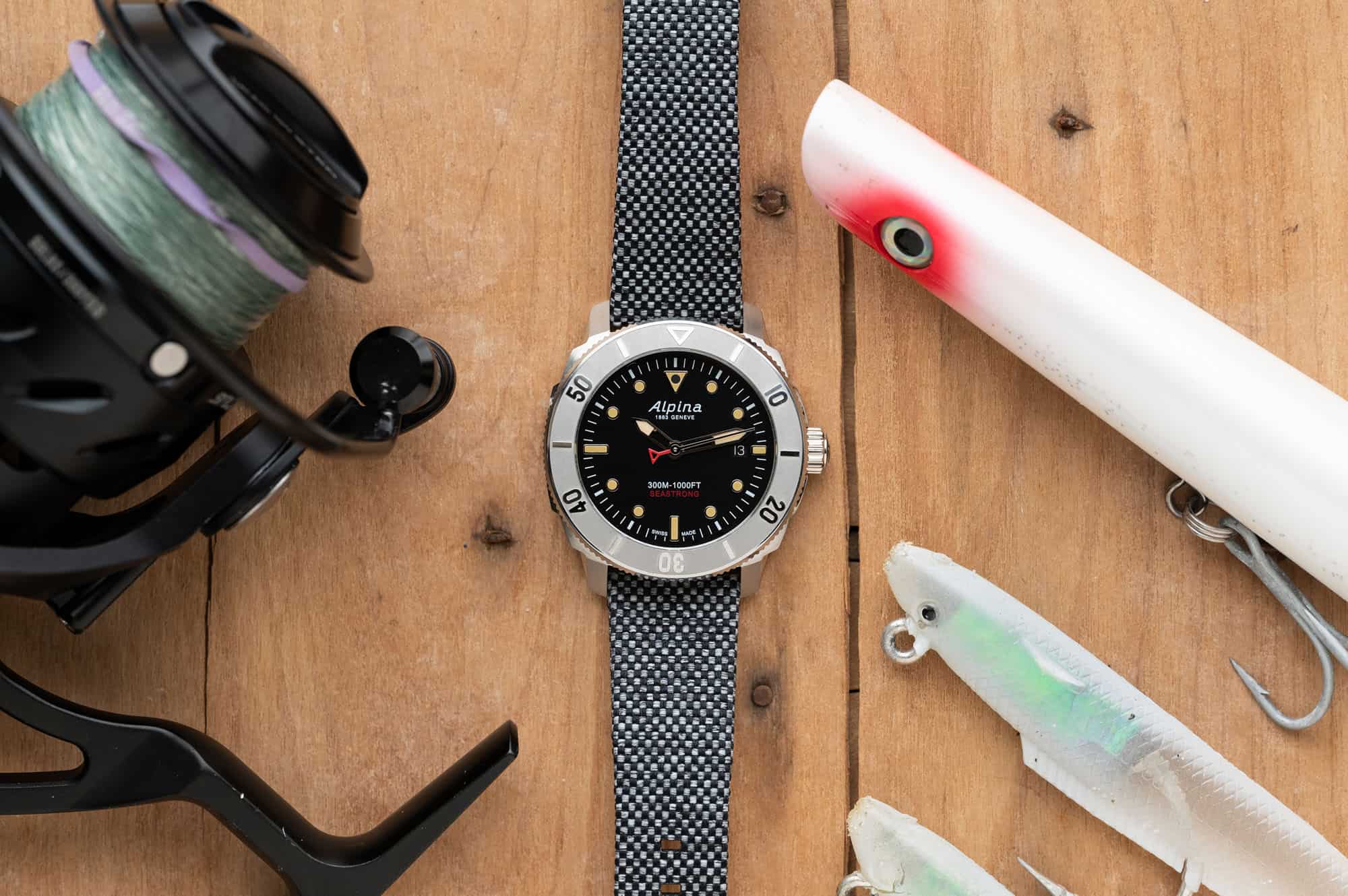
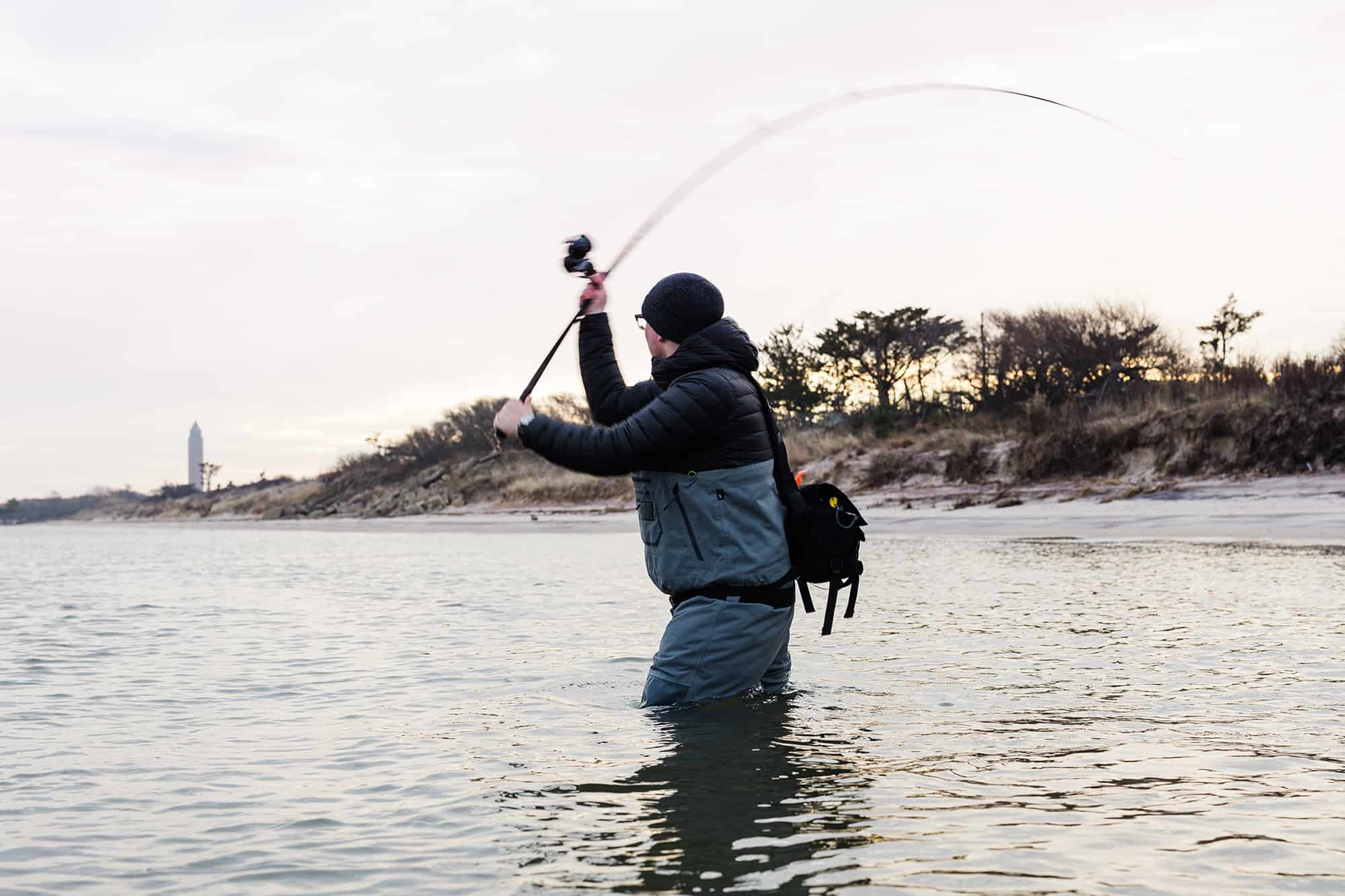
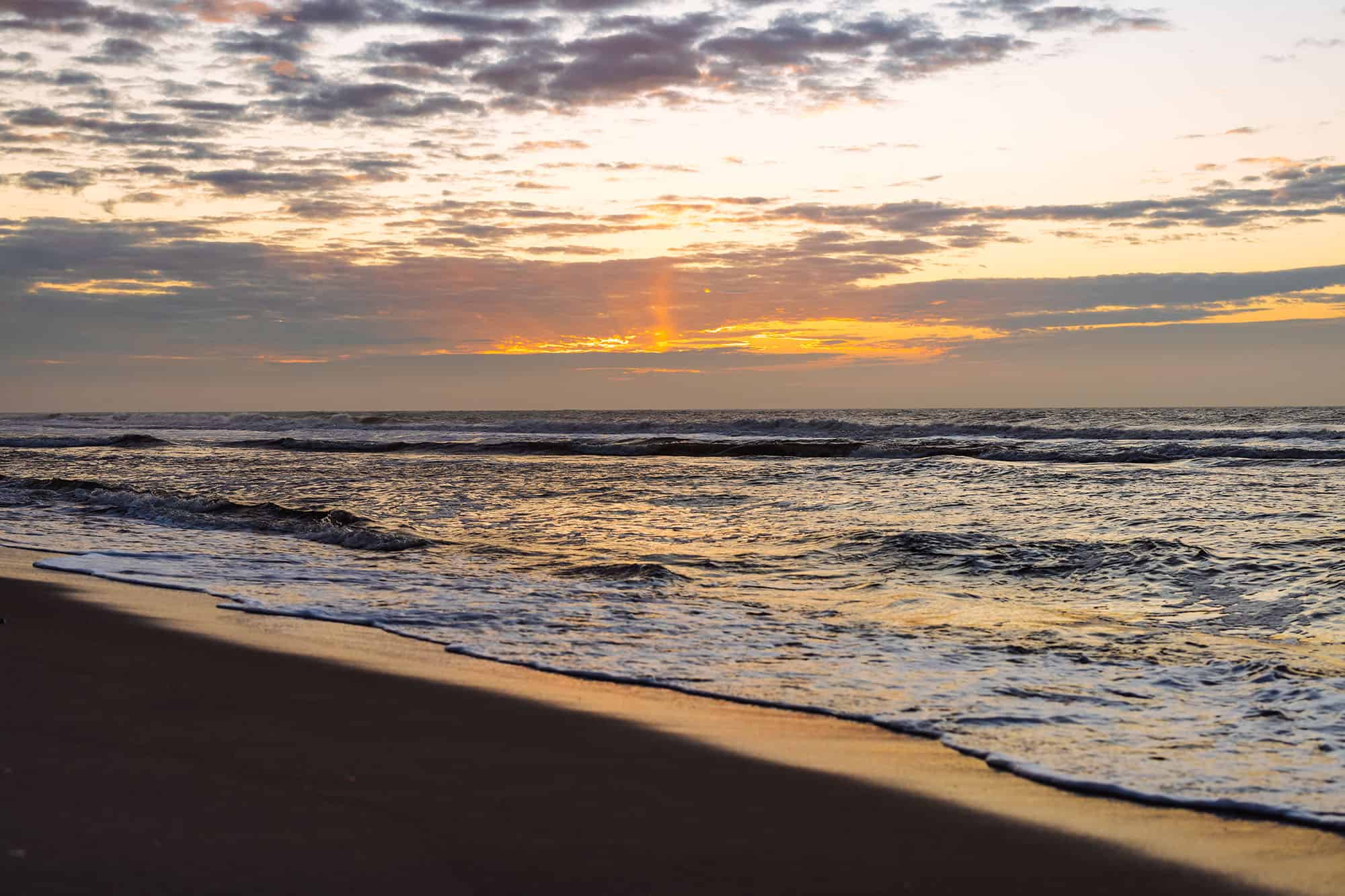









 Featured Videos
Featured Videos





